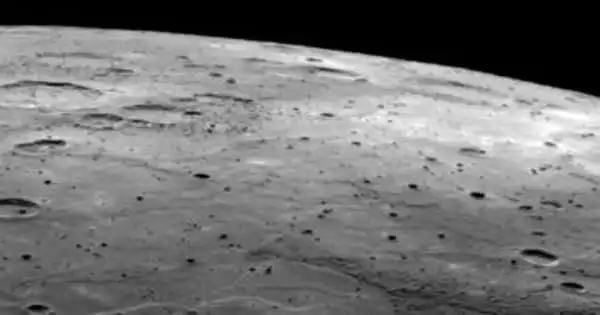For the first time, NASA’s Hubble Space Telescope has identified the presence of oxygen and carbon in the atmosphere of a planet outside our solar system. Astronomers warn that oxygen occurs naturally and is not created by any form of life on the gaseous hot globe. Humble oxygen is more than just a component of life. According to a new study, the element could potentially aid scientists in seeing into the interiors of planets orbiting distant stars.
Experiments in the laboratory reveal that rocks exposed to higher concentrations of oxygen melt at lower temperatures than rocks exposed to lower concentrations. Researchers write in the Proceedings of the National Academy of Sciences that the discovery shows that oxygen-rich rocky exoplanets may have a thick layer of the soupy mantle, potentially giving rise to a geologically dynamic world.
A goopy interior is expected to have far-reaching consequences for a rocky planet. Magma is molten rock deep within a planet that propels geologic action on the surface, such as what occurs on Earth. Volatiles such as water vapor and carbon dioxide can fizzle out of magmatic ooze during volcanic eruptions, creating potentially life-friendly atmospheres. But the factors that drive mantle melting on Earth aren’t well-understood, and scientists have tended to focus on the role of metals, such as iron.
The degree of oxidation could determine how a young exoplanet’s syrupy insides eventually settle into subterranean layers. A more oxidized and more melt-prone gut at lower temperatures may lead to a smaller solid core, a thicker sludgy mantle, and a more metal-deprived crusty shell.
Yanhao Lin
The role of oxygen in rock melting has been underestimated, according to Yanhao Lin, a planetary scientist at Beijing’s Center for High-Pressure Science and Technology Advanced Research. According to him, oxygen is one of the most plentiful elements on Earth and most likely on rocky exoplanets as well. As a result, other scientists may have previously assumed that it is simply too common an element to play such a literally earth-shattering function, according to Lin.
Lin and colleagues measured the melting temperatures of synthetic, iron-free basalt rock under rock in two environments: oxygen-starved circumstances and oxygen-rich air. The team used the faux rock to isolate oxygen’s effect on melting and rule out the effects of iron, which can also influence rock melting.
The minerals in the oxygenated basalt remained melted longer than the minerals in the oxygen-depleted samples as the molten rocks cooled to less than 1000° Celsius, the team discovered. The oxygenated rocks consolidated at temperatures that were 100° Celsius lower than their counterparts.

The researchers conclude that, similarly to how salt decreases the melting temperature of ice, oxygen makes it easier for rocks to melt. Lin hypothesizes that oxygen can break up lengthy chains of silicon and oxygen atoms in solid rock, causing them to split up into smaller fragments. When compared to the lengthier, tangly clusters, these pieces are more mobile and can flow more effortlessly.
The degree of oxidation could determine how a young exoplanet’s syrupy insides eventually settle into subterranean layers. A more oxidized and more melt-prone gut at lower temperatures may lead to a smaller solid core, a thicker sludgy mantle, and a more metal-deprived crusty shell, the researchers say.
A caveat to the work is that the researchers tested the impact of only oxygen on the melting temperature of rocks. The team has yet to consider other factors such as iron concentration and high pressure, which are also probably part of many real-world exoplanet interiors. These additional factors will further induce melting, Lin predicts.
According to planetary scientist Tim Lichtenberg of the University of Oxford, who was not engaged in the study, the findings represent “a pretty nice attempt.” Other factors that contribute to mantle melting may outweigh oxygen’s impact, but the new findings are still useful, he says. Understanding the potential impact of oxygen, for example, could be useful in explaining the inner workings and history of any exoplanet discovered by astronomical investigations. That insight may become even more valuable – and timely – as scientists prepare to use the freshly launched James Webb Space Telescope to explore the atmospheres of other worlds.
Of course, lab tests cannot capture all of the intricacies of real-life planetary interiors. However, the work is required to guide and corroborate, the creation of theories about how particular sorts of exoplanets came to be, according to Lichtenberg. When integrated with other techniques, such as modeling, simulations can then extend the reach of experimental data.
“There’s a triad of observations, modeling, and experiments,” Lichtenberg explains. These three prongs work together to progress exoplanet science as a whole, long before humans set foot on such distant worlds.
















